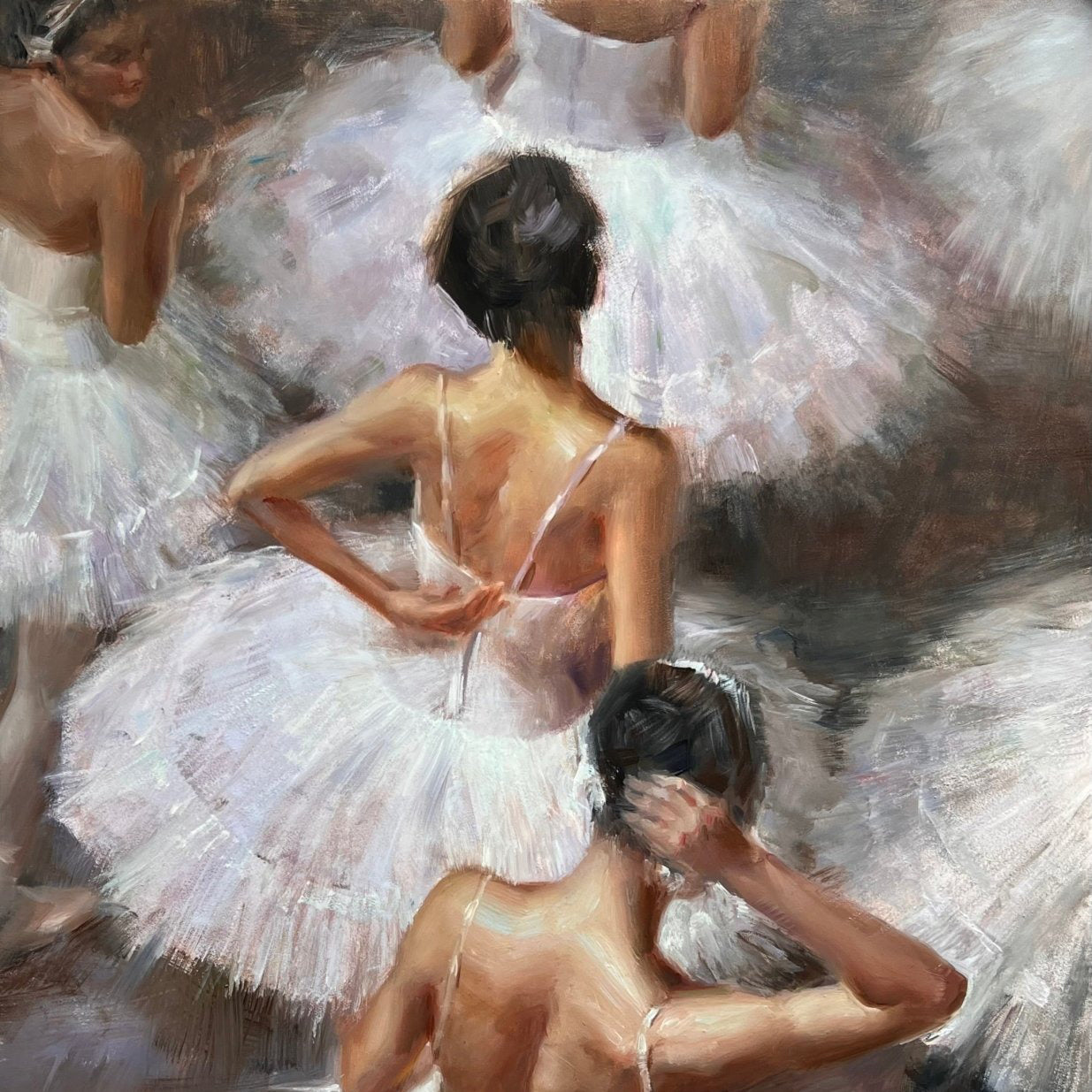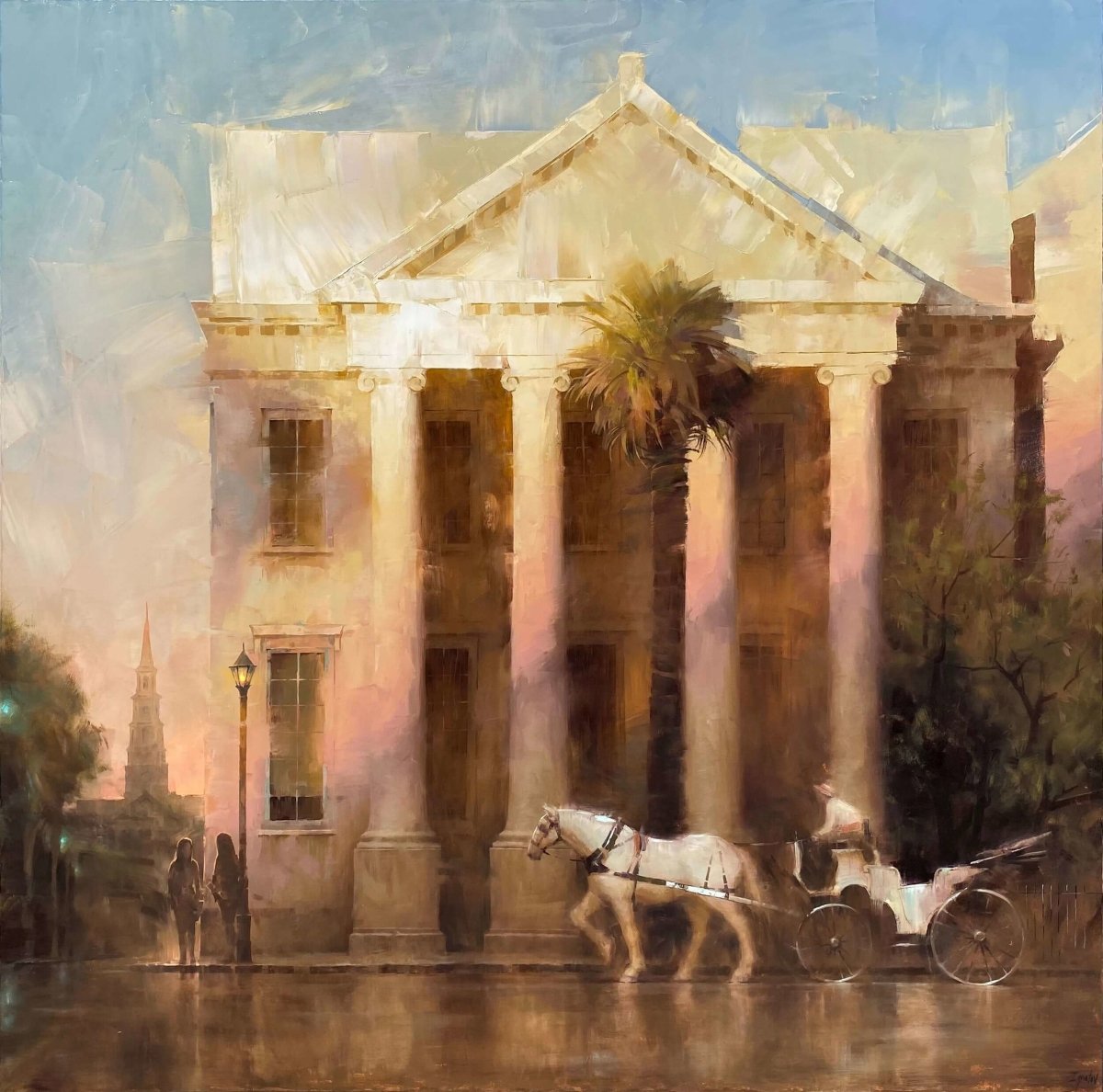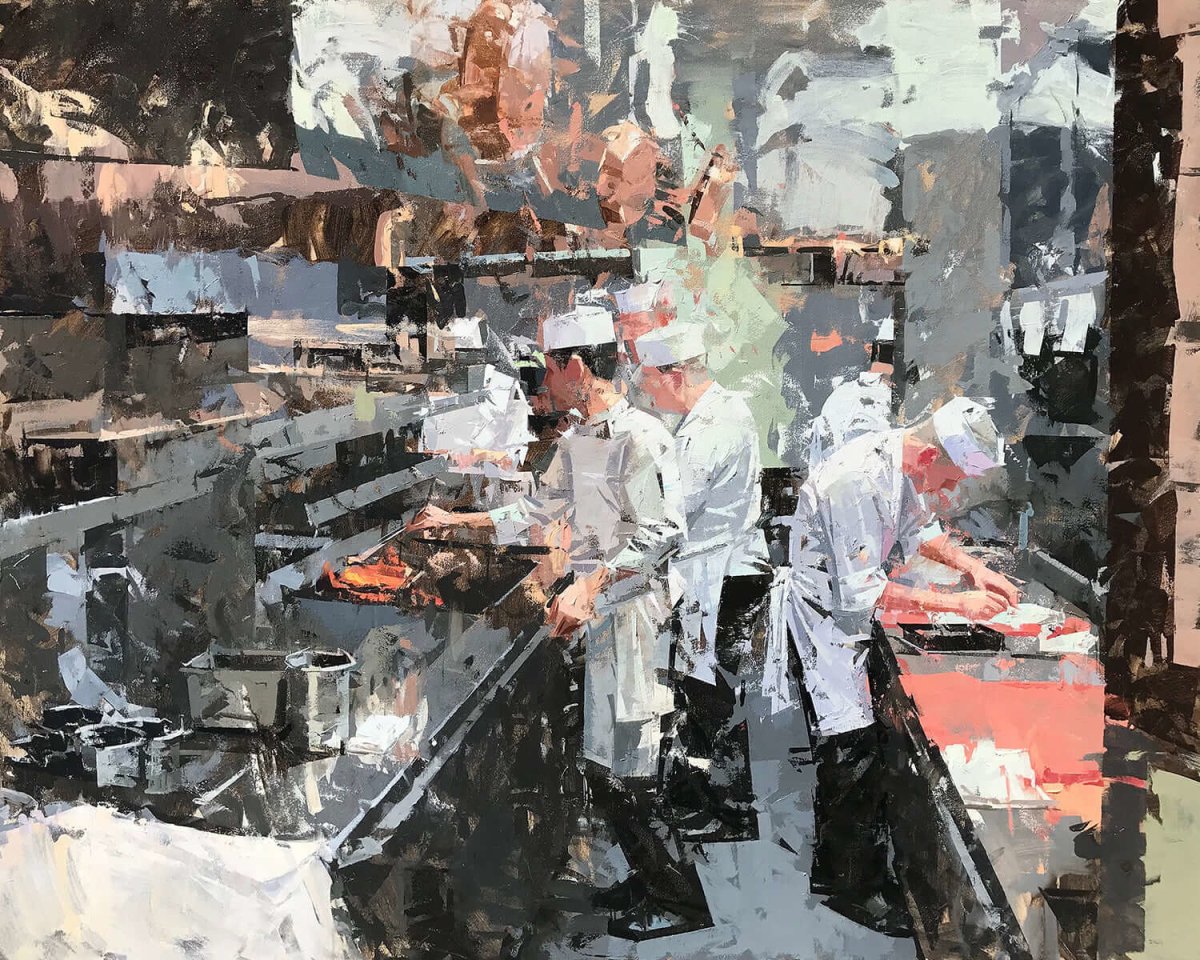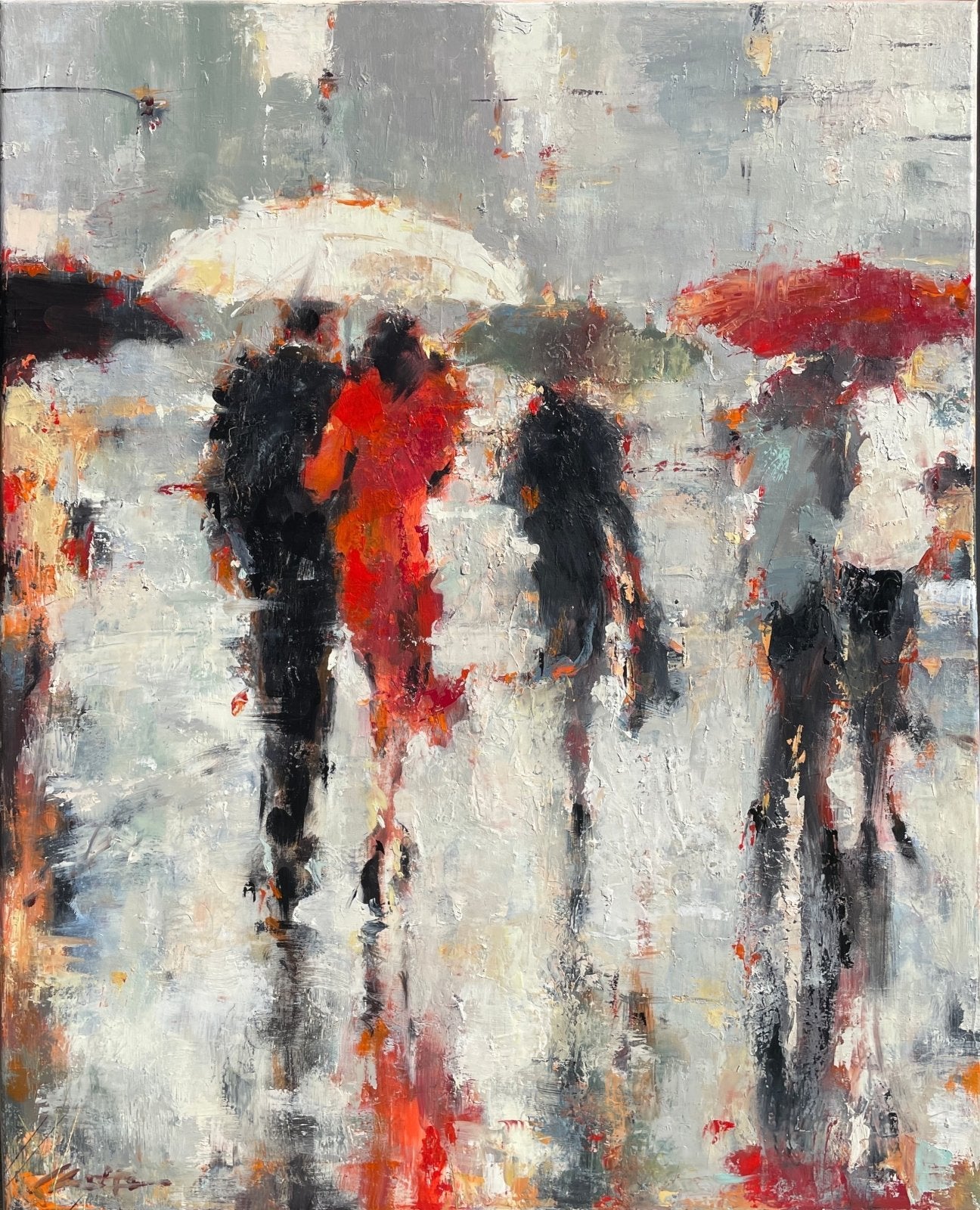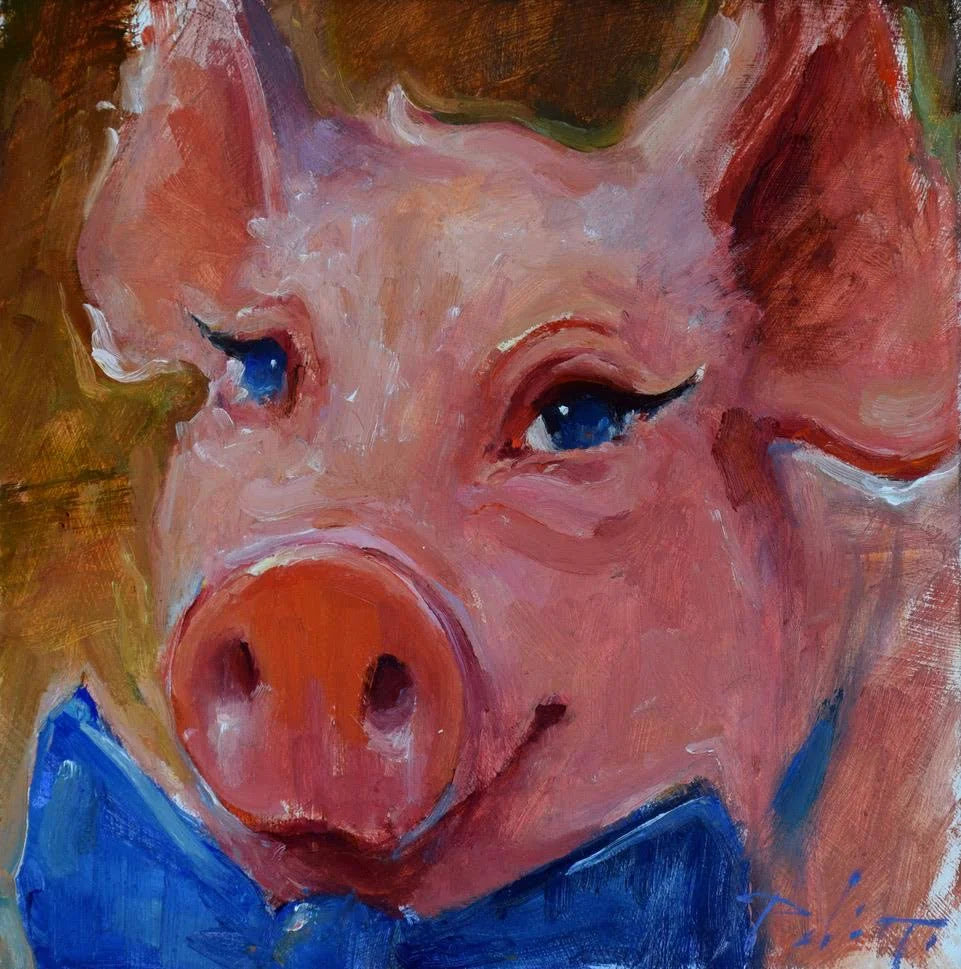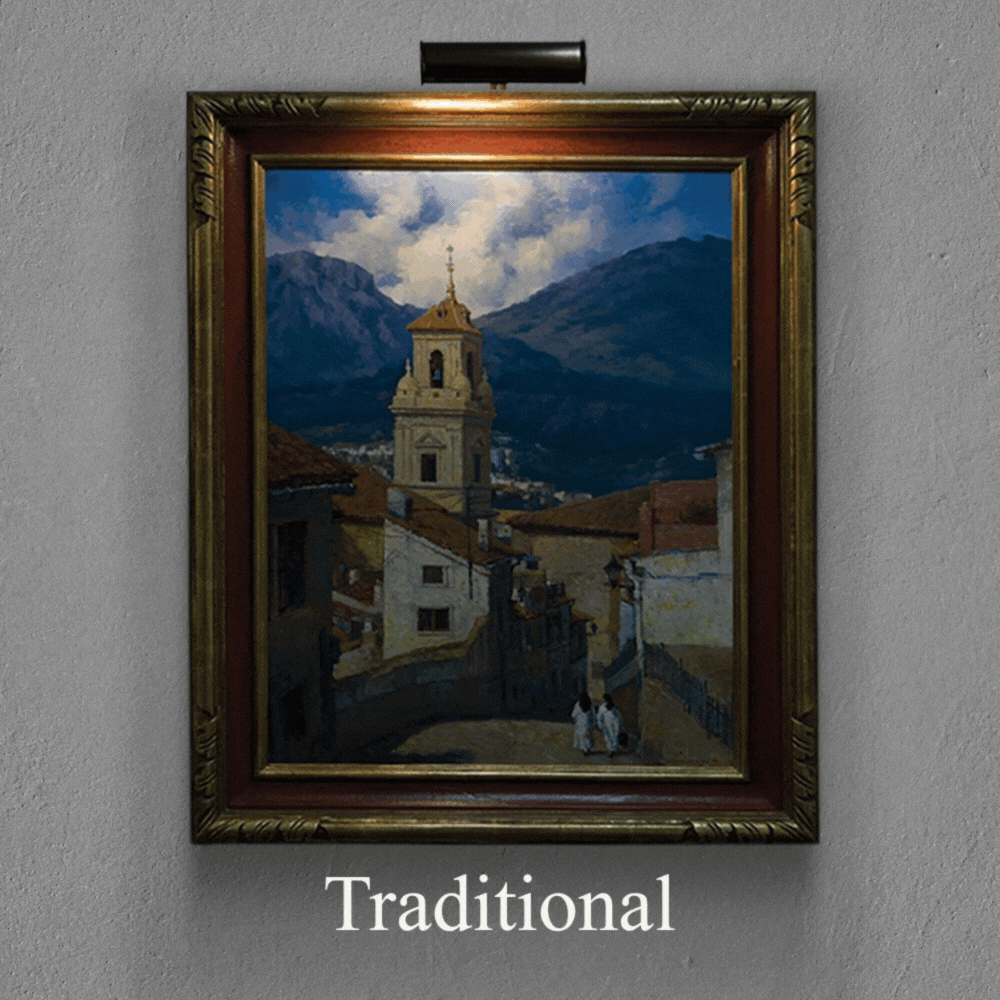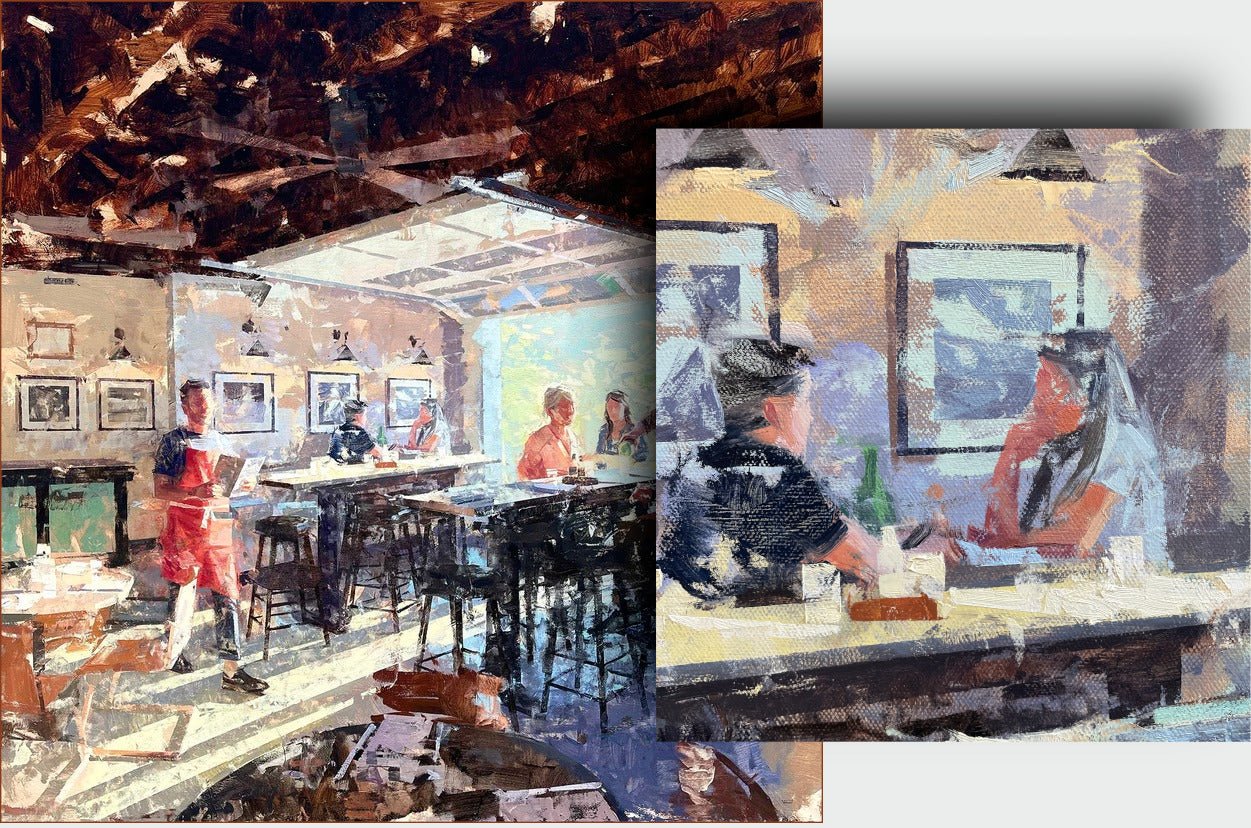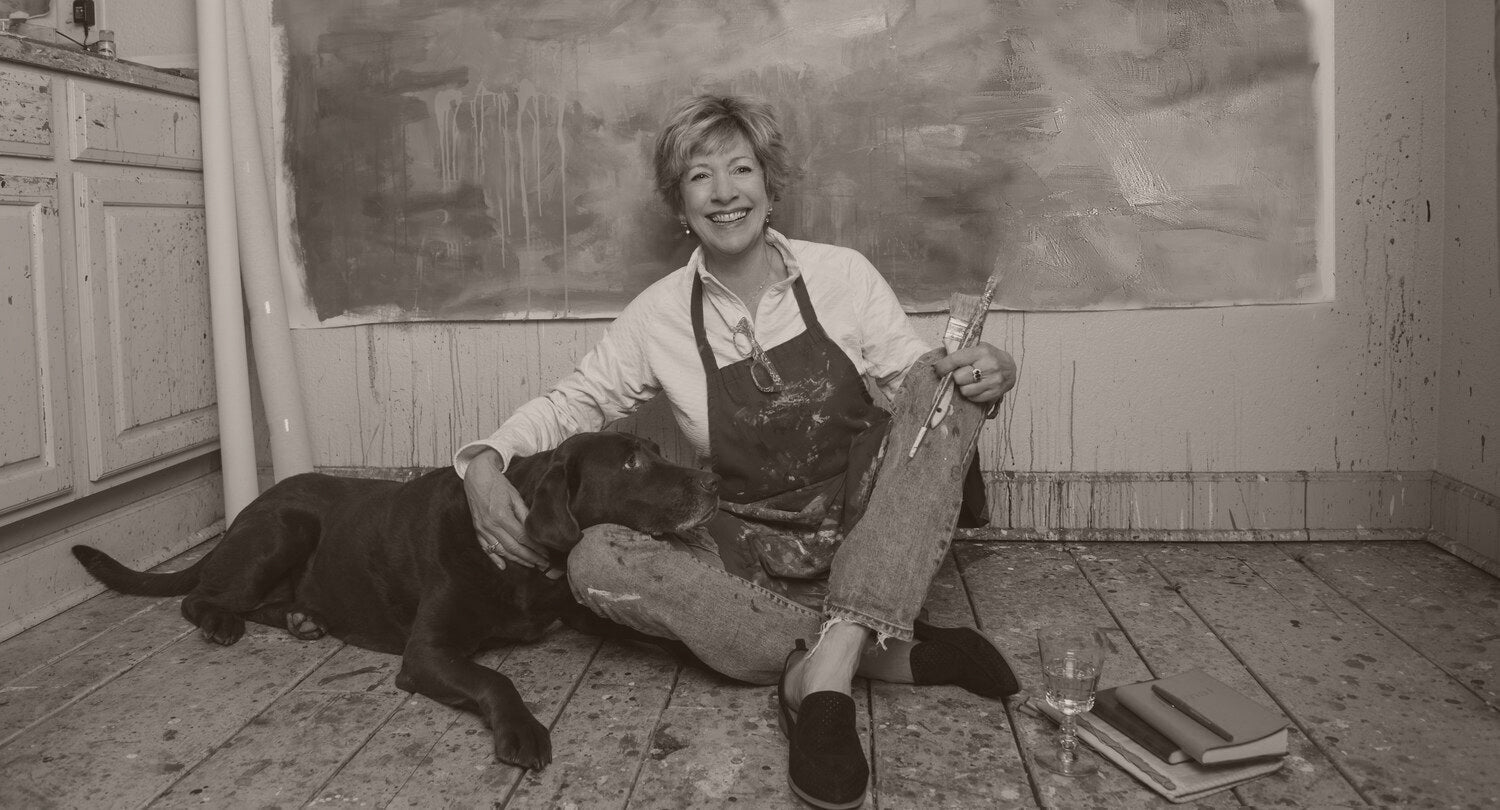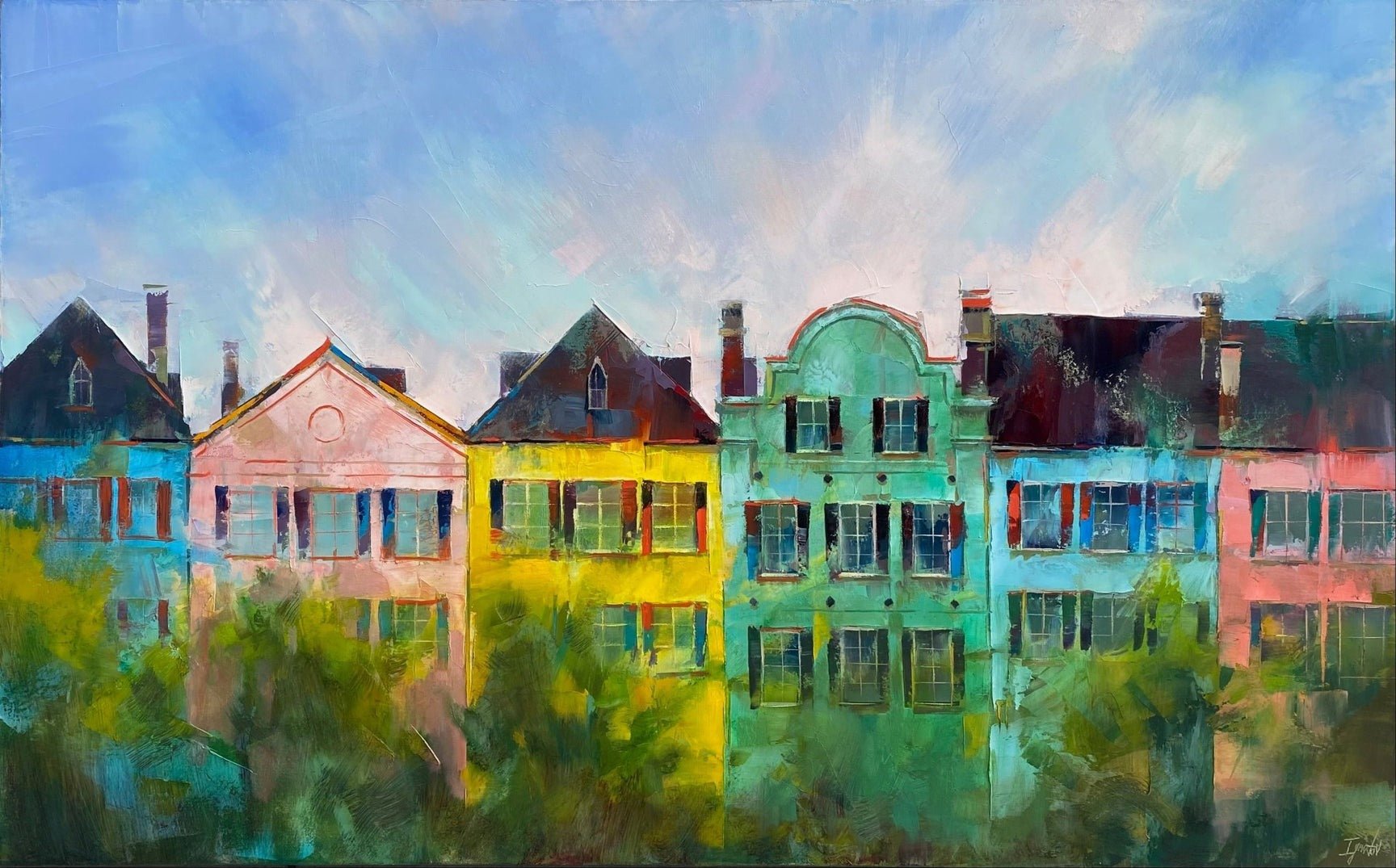Strong Marks at LePrince Fine Art
I thought I’d take a moment to explain my philosophy in curating the LePrince art galleries in Charleston, SC. More than that, I’d like to discuss the importance mark making plays in the process.
Mark making is the simple action of producing marks on a surface. In the history of art, this action is as old as humanity at the Lascaux caves in Southwest France. It ushered in pivotal tools such as the pencil, pen, brush, and palette knife. Mark making is time honored in some of the most celebrated movements in art—including Impressionism, Expressionism, and Abstract Expressionism.
Artists often use mark making as a gesture to express their feelings or emotions towards what they have seen or experienced in the subjects they paint. In short: these "marks" record the process of hand, head, and heart.
At LePrince Gallery, these marks tell the story of a collection of individual artists. Like fingerprints, these artists possess unique characteristics. As an artist and owner of my own gallery, I believe in quality over quantity. To that end, I have put an emphasis on providing a forum where each artist is properly represented. By giving artists I believe in the wall space they deserve, the artist/gallery relationship has become more than a business; it is a philosophy. The work of these artists, along with my own, shows a journey toward becoming the best version of ourselves. If you make your way into one of my galleries, you will notice that we hang our artwork by artist, and that each of these artists has a significant amount of wall space in order to be properly represented. This not only allows us to showcase artwork to a high degree; it allows us to be a better representative for our artists. It is my honor to represent these artists. And it is my honor to share them with you.
As a gallery owner, it is a true pleasure to find an artist whose use of mark making clearly sets them apart from the crowd. In order to become known, I believe it is imperative for artists to be able to produce highly recognizable marks so that patrons can spot their paintings by the marks on the canvas.
As an artist I once had a gallery owner fuss at me for pursuing plein-air work. While I did not agree with much that he said that day, he did make one good point. He said, “The more you artists get together and paint, the more your work all looks the same.” Who wants that? There is no success in creating an indistinguishable painting.
Mark making lends itself more easily to some art forms than others. In representational artwork, mark making is less prevalent because the emphasis is on creating a realistic or accurate representation of the subject, rather than on the act of painting itself. Representational art typically aims to depict the subject in a lifelike manner, with a focus on achieving accuracy and realism in terms of color, form, and composition. In such cases, the brushstrokes and marks are usually less visible and are used to blend the colors and create a smooth surface of the painting.
The marks are not trying to draw attention to the process of painting itself. Additionally, in representational art, the artist often uses techniques such as glazing and blending to achieve a smooth surface, which can make the brushstrokes and marks less visible or obvious.

Many of the works by gallery artists Ignat Ignatov, Marc Anderon, Mark Bailey, Ning Lee, and others are representational in nature—yet each of these artists has still managed to set themself apart through their use of mark making.
In contrast, non-representational art forms (such as abstract and expressionist art) place more emphasis on the artist's personal expression and the act of painting. Paintings by Andy Braitman, Eileen Power, and Curt Butler could easily lean into the abstract. These forms of art more easily allow for the use of mark making as a means of creating dynamic and expressive compositions. They use bold and gestural brushstrokes to convey emotion and meaning.
Strong Marks have been used throughout the history of painting.
Throughout history, many artists have found fame and fortune from their use of mark making, but a few notable examples stand out:
-
Vincent van Gogh is known for his bold, expressive brushstrokes and vivid use of color. Van Gogh's work conveys an emotive quality through his mark making. You may have seen some of these paintings in the news:
-
"Portrait of Dr. Gachet" (sold for $82.5 million in 1990)
-
"Sunflowers" (sold for $39.7 million in 1987)
-
"The Starry Night" (sold for $57 million in 1990)
-
"Almond Blossom" (sold for $80.2 million in 1990)
-
Jackson Pollock was one of the pioneers of gestural abstraction. Pollock's work is known by his use of dripped and splattered paint to create dynamic and energetic compositions. Jackson Pollock’s painting titled "Number 17A" sold for $200 million at auction in 2016.
-
Willem de Kooning was known for his use of bold, gestural brushstrokes in exploration of the human figure. de Kooning's work is known for its expressiveness and emotional intensity. His painting titled "Interchange" sold at auction for $300 million in 2015.
-
Paul Cezanne was a prominent and important figure in the Post-Impressionist movement. Cezanne is known for his use of short, broken brushstrokes in capturing the fleeting effects of light and color on his subjects. His painting titled "The Card Players" sold for $250 million in 2011.
-
Mark Rothko was one of the most important figures in the development of Abstract Expressionism. Rothko's work is characterized by his use of large, simplified shapes and blocks of colors to create a sense of depth and emotion. His painting titled "Orange, Red, Yellow" sold at auction for $87.9 million in 2012.
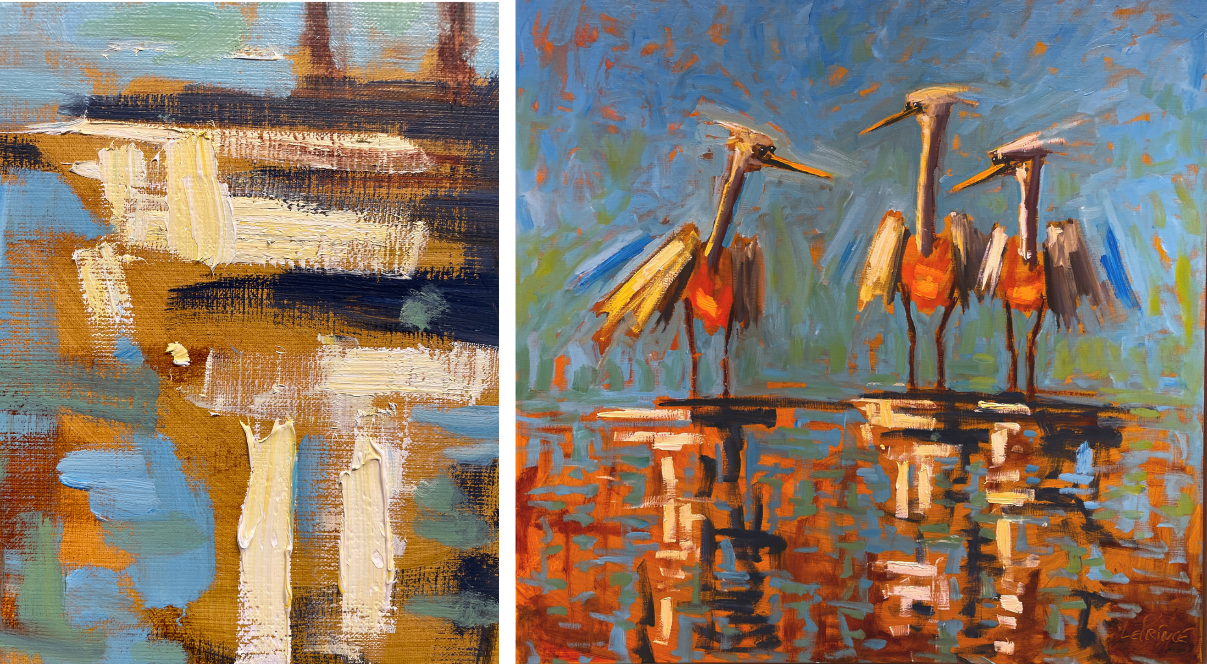
Strong Marks for different painting styles.
It’s easy to see how the use of mark making allowed each art movement to evolve into the next. Let’s look at the role mark making has played throughout history—from Impressionism to Post-Impressionism, Abstract, and Expressionism.
In Impressionism, artists began to focus on the act of painting itself. First came the use of short, thin, broken brushstrokes to capture the fleeting effects of light and color on forms (all forms—from faces to still life). Next, the emphasis on mark making led the way for the Post-Impressionism movement. This is where artists began to use more expressive and bold brushstrokes to imply emotion and mood in their work.
The development of Abstract art in the early 20th century was a further shift away from realism and towards the exploration of form and color. Now, artists began to apply these mark making techniques as a means of creating abstract compositions. We began to see the use of dramatic, demonstrative brushstrokes to create energetic, dynamic, expressive works.
In modern art, the mark became the search for the authentic self. During this period, the artist’s voice, process, and product were all conducive to the mark. The artists’ hand was a visible reminder of their journey and the humanity they hoped to capture.

Finally, Expressionism emerged as an art form that allowed the artist to focus on more emotional and subjective responses to subjects and to their environment. These artists used mark making as a means of expressing their feelings and experiences. Here, marks are often bold, colorful, expressive brushstrokes that share the emotional intensity of the artist themselves.
Mark making has played a vital role in the evolution of all art forms. We use it as a means of capturing light, form, shadow, color, and emotion in endlessly dynamic and expressive ways. Whatever art movement comes next, my bet is on mark making to be at the forefront.
by Kevin LePrince


